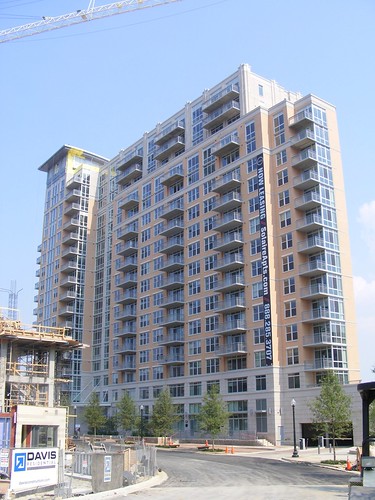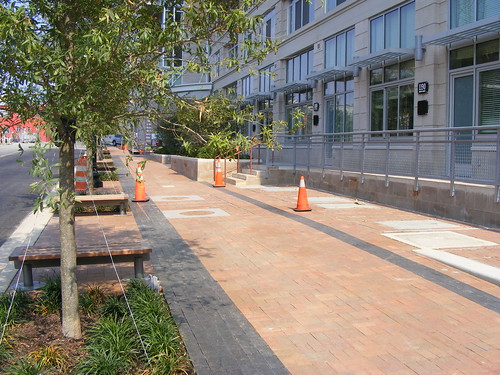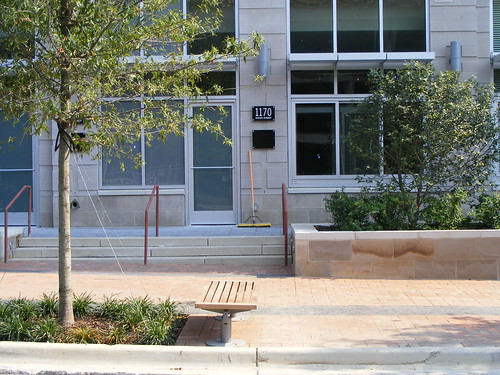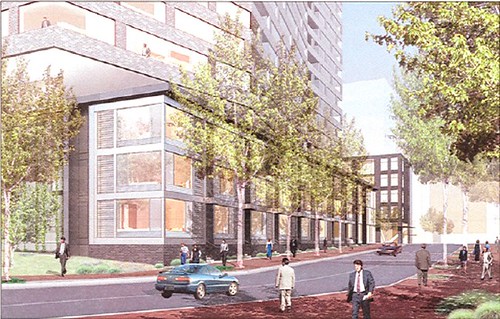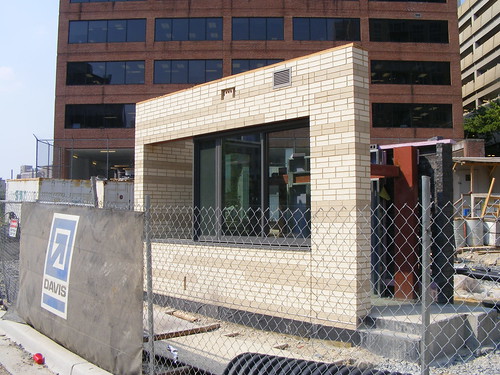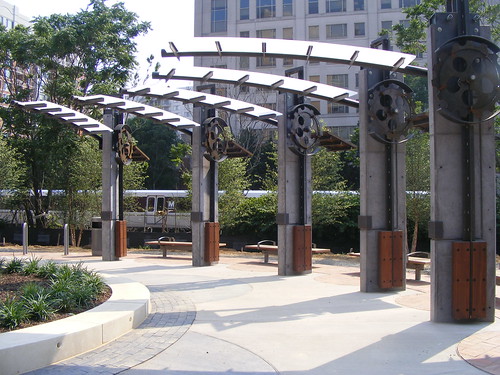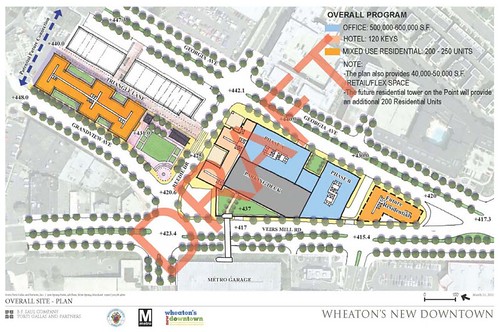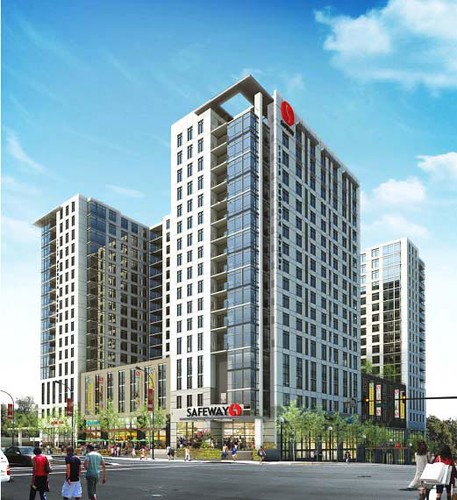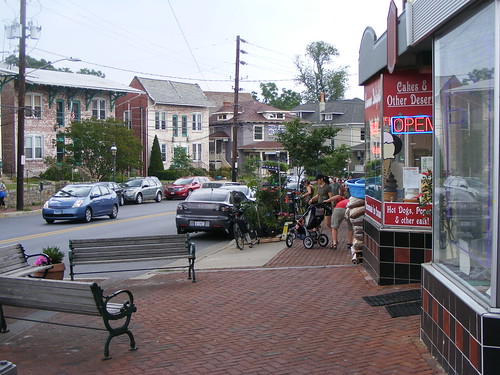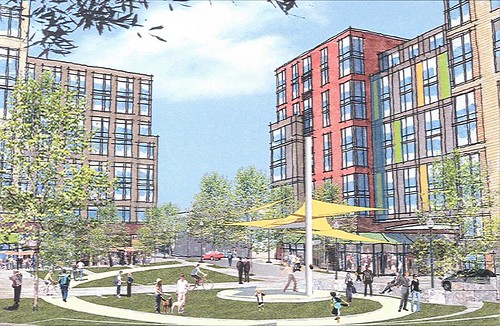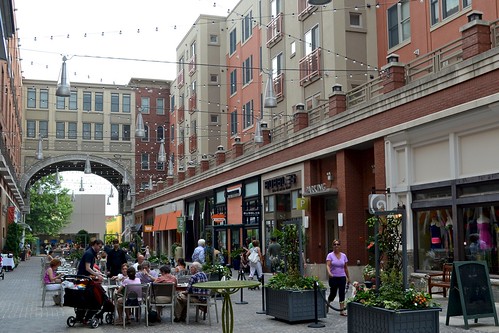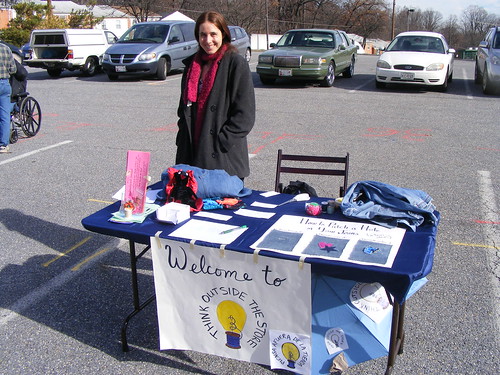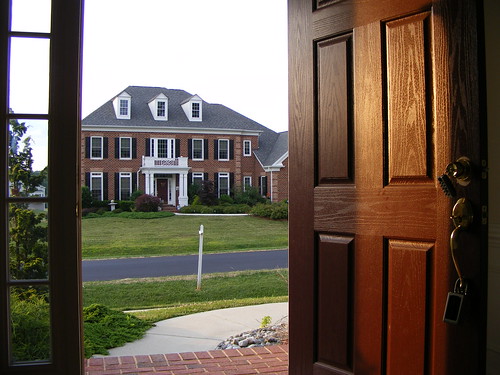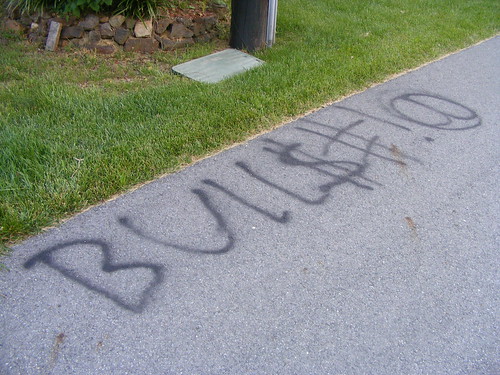 |
| Sign on Ellsworth Drive outside of downtown Silver Spring. |
Montgomery County neighborhoods, like many in North America, generally fall into two categories: those with cul-de-sacs and those without. Before World War II, and for a little while afterwards, neighborhoods in MoCo were built with streets in a grid or at least a connected network. Yet as cars became more popular, these streets often became noisy and congested, and planners came up with an alternative.
With support from the Federal Housing Administration and prevailing planning and design trends that turned its back on traditional urban street patterns, builders nationwide switched to cul-de-sacs. As a result, most MoCo neighborhoods built since then have them. Just look at a map of the county and you can pick out older, gridded communities like Bethesda from newer ones with loopy, disconnected streets, like Germantown.
 |  |
| Disconnected cul-de-sacs in Germantown force everyone to use collector roads. | Gridded streets in King Farm disperse traffic throughout the neighborhood. Photos by Evan Glass. |
We've returned to appreciating a connected street network, which can diffuse congestion and make walking, biking and even driving safer and easier. They're also cheaper to maintain and easier for emergency vehicles to navigate, which are two of the reasons why Virginia banned cul-de-sacs in 2009.
Yet in many of MoCo's oldest neighborhoods, which were built with grids to begin with, the cul-de-sac mindset remains. Prodded by residents sick of speeding drivers on their neighborhood streets, the county's Department of Transportation have found ways to keep through traffic at bay through a kind of "fake" cul-de-sac.
Sometimes, they'll restrict turns from arterial streets or ban cars from entering certain streets at rush hour. Occasionally, they'll take more drastic measures and cut off a through-street entirely, like Ellsworth Drive near downtown Silver Spring.
If you live on a street like Ellsworth, you're probably not complaining. You get all of the benefits of living next to one of the region's biggest jobs, shopping and entertainment districts while enjoying quiet, peaceful streets undisturbed by people from outside the neighborhood.
Less amused, however, are your neighbors on adjacent streets, like Colesville Road, Wayne Avenue or Georgia Avenue that have to pick up the slack. Breaking up the street grid means more local trips end up on what through streets remain, making them more congested. Studies show that residents living on busy streets are not only exposed to higher pollution levels, but they have fewer friends and a weakened sense of community.
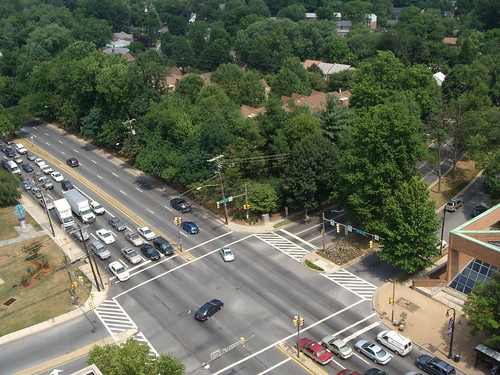 |
| Cutting off through-streets in Silver Spring forces all traffic onto streets like Georgia Avenue, making them a barrier between neighborhoods. |
Neighbors in adjacent Takoma Park worried it would just send the cars their way. "We will be impacted by moving your traffic over to us, and your neighborhood is no more important, your kids are no important and your convenience is no more important [than our own]," said Takoma Park resident Ellen Zavian.
However, one Sligo Park Hills resident was so tired of drivers using his street that he threatened violence against them. "If you guys drive through my neighborhood in the early morning hours and I perceive you to be a threat, I'm going to start walking around with a rock in my hand," Sean Gibbons told the Gazette.
As a result, the City of Takoma Park implemented their own traffic restrictions later that year. Mayor Bruce Williams said if they didn't, they would "be essentially saying ‘okay take all that traffic and send it through Mississippi Avenue and Ritchie Avenue."
We can't fault people for wanting to live on a safe, quiet street, but the streets in neighborhoods like Sligo Park Hills are owned by the county, meaning that all county residents pay taxes to maintain them and have a right to use them. Besides, telling drivers they can't use your street does nothing to solve the larger traffic problem in Montgomery County.
 |
| Bike Boulevard in Berkeley, California. Photo by Artbandito on Flickr. |
While MoCo's older communities were built with interconnected streets, they didn't have sidewalks, and many residents want to keep it that way. However, the best way to reduce car traffic, at least for shorter trips, is to make it easier and safer to bike or walk. Many of the neighborhoods that currently have traffic restrictions are already within a short walk or bike ride of major shopping areas, job centers and public transit. If more people are out biking and walking on local streets, it'll be a cue that drivers should slow down.
Sidewalks are a start, though Montgomery County planners have also explored striping a "pedestrian lane" on streets where sidewalks are either impractical or too costly. While we're at it, we could stripe some more bike lanes as well.
Or we could turn streets like Ellsworth Drive into "neighborhood greenways," also known as "bike boulevards," designed to give people on foot or bike priority over drivers. That's sort of what currently exists on Second Avenue between 16th and Spring streets in Silver Spring, which allows bikes and buses during rush hour but not cars. And if we're going to turn a street into a dead-end, we should at least make it passable for pedestrians and bicyclists, like on Middleton Lane near downtown Bethesda.
A well-connected street network has many potential benefits: better access to local amenities, diffused traffic congestion, and even stronger social ties. The best way to reduce congestion on little streets and big streets alike is to give people choices, whether it's multiple routes for driving, the option of taking transit, or the ability to safely get around by foot or bike.
While residents shouldn't have to worry about speeding drivers or heavy traffic on small neighborhood streets, closing off public streets isn't a real solution.




